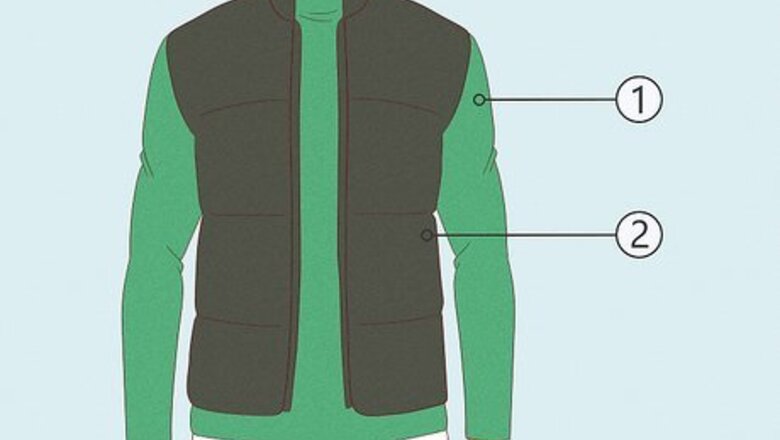
views
- Preserve body heat by bundling up in plenty of layers, including warm socks and slippers. Snuggling with a pet or loved one is another great way to stay warm.
- Warm your home naturally by opening up curtains when it’s sunny outside. Keep your curtains closed at night to prevent any cold from seeping in.
- Keep your living space as warm as possible by sealing off unused rooms and laying out rugs over any hard floors.
Bundle up in lots of layers.
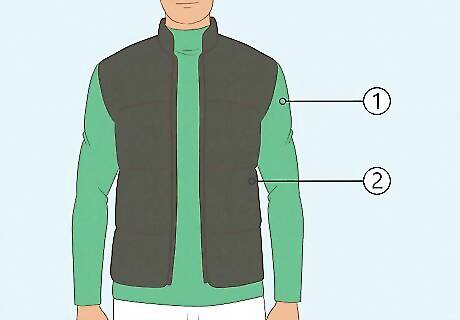
Extra layers help you stay insulated and toasty in chilly temperatures. Choose a long-sleeve shirt to be your base layer, along with a warm vest. Keep bundling up with loose layers until you feel comfortable. If possible, choose garments that are extra warm and insulating, like fleece, wool, or cotton. Don’t forget about your feet, too! Slide into a warm pair of socks and slippers to keep your feet from getting too cold. Want to make your hands and feet extra toasty? Slip some hand warmers and foot warmers into your gloves or mittens and shoes for an extra burst of warmth. Loose layers are better since you’re less likely to sweat a lot in them. Getting your skin damp and sweaty may potentially boost your chances of getting hypothermia.
Enjoy a hot drink or bowl of soup.

Hot food and beverages warm you from the inside out. Boil some water to make some decaffeinated tea or hot chocolate, or start heating up a delicious pot of soup on the stove. Sipping on hot drinks and soups is a great way to stay both warm and satiated when you’re struggling to stay warm at home. Be sure to enjoy alcoholic drinks in moderation. While these beverages can make you feel warmer, they don’t help you hold onto body heat.
Bake something in the oven.
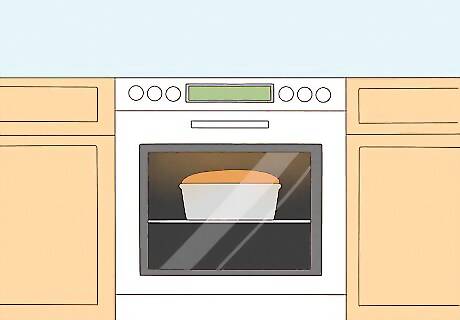
Using your oven automatically makes your home warmer. In the mood for cookies, banana bread, or another tasty food? Whip up a batch of your favorite baked good and enjoy the extra heat that fills your home while the food bakes. Once you’ve turned off your oven, open the door slightly to let that extra heat escape. Don’t leave your oven open and turned on, as this can potentially lead to carbon monoxide poisoning.
Snuggle with your pets and loved ones.

Sharing body heat can help you stay warm in a cold home. Have a pet, roommate, relative, or friend nearby? Invite them over to the couch or bed for a nice snuggle sesh as you both warm up together. Grab some cozy blankets to really amp up the toasty vibes and ward the chill away. Snuggling in bed? Swap out your sheets or duvet with a thicker, warmer version that’s better suited to the cooler temps.
Open your curtains when there’s lots of sun.
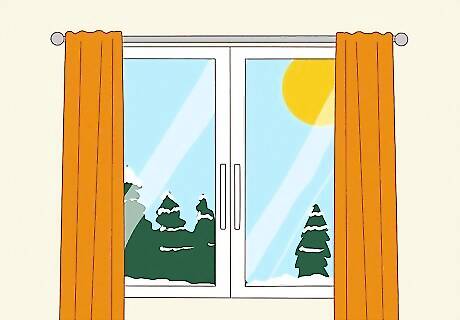
Let the sunlight fill your home with natural warmth. Locate the windows that get the most direct sunlight and open up the curtains while the sun is out. Focus especially on any south- and east-facing windows in your home if you live in the northern hemisphere, as these will be exposed to the most sunlight.
Shut your curtains at night.
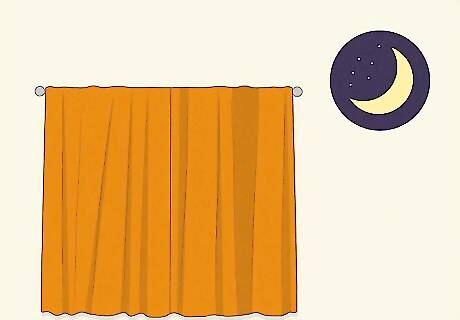
Blocking off your windows prevents an unwanted chill from getting into your home. Once the sun starts to set, close your curtains completely. If your windows are notoriously drafty, cover up the window with a sheet of bubble wrap to provide some extra insulation. Give your windows some extra insulation by switching to thermal curtains.
Shut the doors to any empty rooms.

Sealing off unused rooms helps keep the rest of your home warmer. All the heat that’s currently in your home is precious, so closing off the doors to any surrounding, unused rooms, helps to collect and use that heat more efficiently. For entryways that don’t have doors, drape bedding or a thick curtain over the entrance to prevent heat from escaping. Want to confine your home’s heat to an even smaller space? Build temporary walls with leftover sheets of plywood or cardboard and set them close to wherever you’re spending the most time.
Drape rugs over any hardwood floors.

Block off the cool surface of the floor with a layer of carpet. Floors made with materials like vinyl or hardwood don’t hold onto heat very well. To counteract this, roll out an area rug over the exposed floor so you don’t have to walk on such a chilly surface. A thick blanket can also work in a pinch.
Set your ceiling fans to spin in reverse.
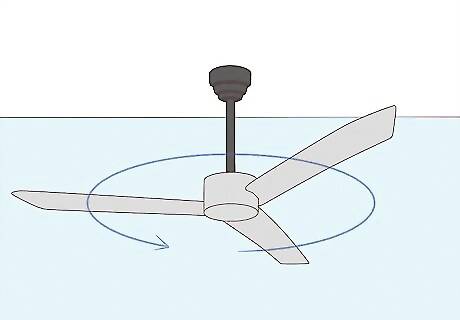
Counterclockwise fans force down the warm air that’s drifted up. Traditionally, ceiling fans spin in a clockwise direction to help funnel cool air down and warm air up. By setting your ceiling fan to spin in a counterclockwise direction, the opposite will occur; you get to enjoy the warm air, while the cooler air gets lifted up. Search around your fan’s motor housing for a switch—activating it will reverse the direction of the fan blades. Check your ceiling fan’s operational wall panel if it has one, as the reversal function might be there.
Seal any gaps surrounding the doors and windows.
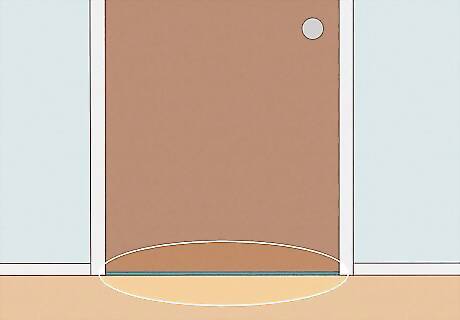
Caulk, weather stripping, and duct tape can all help seal out drafts. Notice any obvious gaps around your windows and doors? Seal them up by applying caulk and installing weather stripping. Here are a few other ways to stop drafts in their tracks and keep your home warm: Slide door snakes beneath each door. Towels and rags can also work in a pinch. Insulate your windows with an at-home window insulation kit. Fill in window pane cracks with clear nail polish.
Hang out upstairs if you have a second floor.

Warm air always rises, which makes your second floor warmer. Scientifically speaking, warmer air expands and loses density, which causes it to float above the denser, less warm air. Use this law of nature to your advantage by holing up in an upper room of your home—chances are, it’ll be a lot toastier than the downstairs.
Stay active and get some exercise.
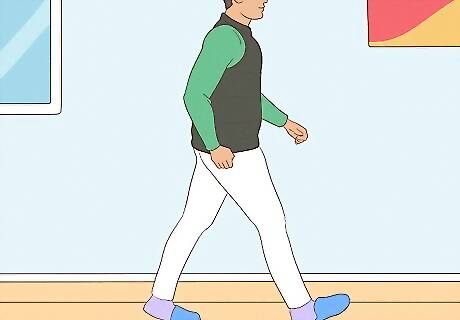
Getting your blood pumping is a great way to stay warm. Taking a walk around your home, moving along to a workout video, doing some yoga poses… anything that gets your blood moving is fair game! Try to get up and move once an hour rather than staying stationary. Whenever you sit down, prop your feet up on an elevated surface, like a table or ottoman—this can help your feet feel a little less cold.
Start a fire in the fireplace.

Your fireplace is a great, electricity-free source of heat. Double-check that your fireplace has proper ventilation to the outside of your home before lighting the fireplace—this prevents any toxic gases like carbon monoxide from entering your home. Only keep the fireplace lit when you’re nearby, and be sure to keep any small children or pets a safe distance away while it’s burning.
Set up an indoor campsite.

Sleeping bags and a tent can offer valuable insulation and warmth. Have some extra camping equipment lying around? Pitch your tent in your living space and invite your roommates, pets, and/or loved ones to crowd inside. For extra warmth and insulation, bundle up in a sleeping bag while you’re nestled inside the tent.
Invest in a portable space heater.

Space heaters are much safer heating options than a stovetop. In the event of a power outage (or just a brutally cold winter day), portable space heaters can be an invaluable source of warmth. Ideally, look for a model that turns off automatically and lacks a glowing heating element. Electric blankets and hot water bottles are also useful investments that can help keep your bed nice and toasty. While they’re not meant for indoor use, setting up a generator can be an invaluable way to keep your home warm during a power outage.


















Comments
0 comment